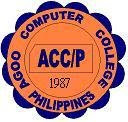UNIT OF COMPETENCY: WORK IN TEAM ENVIRONMENT
UNIT CODE : 500311106
UNIT DESCRIPTOR : This unit covers the skills, knowledge and attitudes to identify role and responsibility as a member of a team.
ELEMENT PERFORMANCE CRITERIA
Italicized terms are elaborated in the Range of Variables
1. Describe team role and scope 1.1. The role and objective of the team is identified from available sources of information
1.2. Team parameters, reporting relationships and responsibilities are identified from team discussions and appropriate external sources
2. Identify own role and responsibility within team 2.1. Individual role and responsibilities within the team environment are identified
2.2. Roles and responsibility of other team members are identified and recognized
2.3. Reporting relationships within team and external to team are identified
3. Work as a team member 3.1. Effective and appropriate forms of communications used and interactions undertaken with team members who contribute to known team activities and objectives
3.2. Effective and appropriate contributions made to complement team activities and objectives, based on individual skills and competencies and workplace context
3.3. Observed protocols in reporting using standard operating procedures
3.4. Contribute to the development of team work plans based on an understanding of team’s role and objectives and individual competencies of the members.
RANGE OF VARIABLES
VARIABLE RANGE
1. Role and objective of team 1.1. Work activities in a team environment with enterprise or specific sector
1.2. Limited discretion, initiative and judgement maybe demonstrated on the job, either individually or in a team environment
2. Sources of information 2.1. Standard operating and/or other workplace procedures
2.2. Job procedures
2.3. Machine/equipment manufacturer’s specifications and instructions
2.4. Organizational or external personnel
2.5. Client/supplier instructions
2.6. Quality standards
2.7. OHS and environmental standards
3. Workplace context 3.1. Work procedures and practices
3.2. Conditions of work environments
3.3. Legislation and industrial agreements
3.4. Standard work practice including the storage, safe handling and disposal of chemicals
3.5. Safety, environmental, housekeeping and quality guidelines
EVIDENCE GUIDE
1. Critical aspects of competency Assessment requires evidence that the candidate:
1.1. Operated in a team to complete workplace activity
1.2. Worked effectively with others
1.3. Conveyed information in written or oral form
1.4. Selected and used appropriate workplace language
1.5. Followed designated work plan for the job
1.6. Reported outcomes
2. Underpinning Knowledge and Attitude 2.1. Communication process
2.2. Team structure
2.3. Team roles
2.4. Group planning and decision making
3. Underpinning Skills 3.1. Communicate appropriately, consistent with the culture of the workplace
4. Resource Implications The following resources MUST be provided:
4.1. Access to relevant workplace or appropriately simulated environment where assessment can take place
4.2. Materials relevant to the proposed activity or tasks
5. Methods of Assessment Competency may be assessed through:
5.1. Observation of the individual member in relation to the work activities of the group
5.2. Observation of simulation and or role play involving the participation of individual member to the attainment of organizational goal
5.3. Case studies and scenarios as a basis for discussion of issues and strategies in teamwork
6. Context for Assessment 6.1. Competency may be assessed in workplace or in a simulated workplace setting
6.2. Assessment shall be observed while task are being undertaken whether individually or in group
Wednesday, June 17, 2009
Subscribe to:
Posts (Atom)
